Streptocarpus In our country today, these plants are becoming more popular, many flower growers give preference to them. However, when growing streptocarpuses, one should not allow neglect to care for them. If you ignore some of the features of pets, they will quickly die, as they are often exposed to various diseases and pests.
Content
Characteristics of streptocarpuses and species names
Streptocarpus is a rosette-type plant. It has a widening, shortened stalk and wrinkled, slightly pubescent leaves, reaching 30 cm in length and 8 cm in width. Coloring can be monophonic green or motley. In the sinuses of each leaf, 6-10 tall (up to 25 cm) and strong peduncles are formed. The diameter of the funnel-shaped tubular corolla of a flower depends on the variety and varies between 2-9 cm. The number of flowers is different, the color is diverse.
You can evaluate the richness of species (about 130-140) from the photo with the names of some of them:
The main pride of the snow-white steppocarpus is lush flowering.
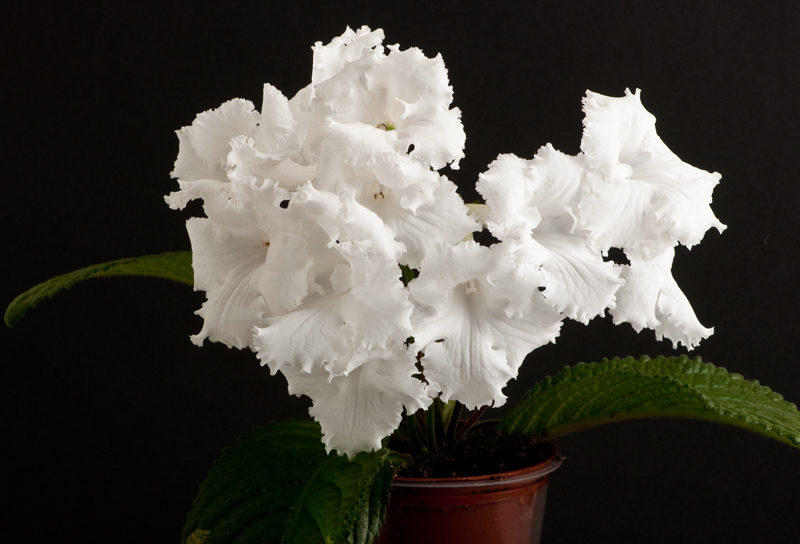
Vendland streptocarpus has only 1 leaf of a saturated emerald shade, growing almost a meter. Blossoms and bears fruit in the second year, and then dies.
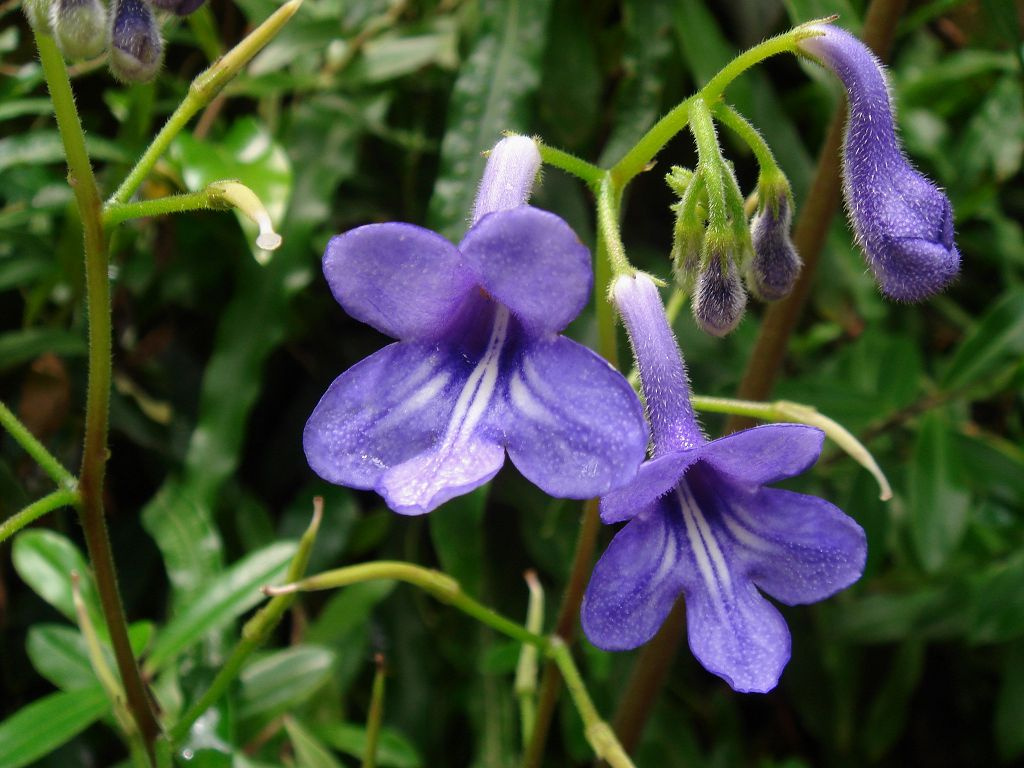
Johann Streptocarpus is capable of covering 3 dozens of bluish-purple flowers.
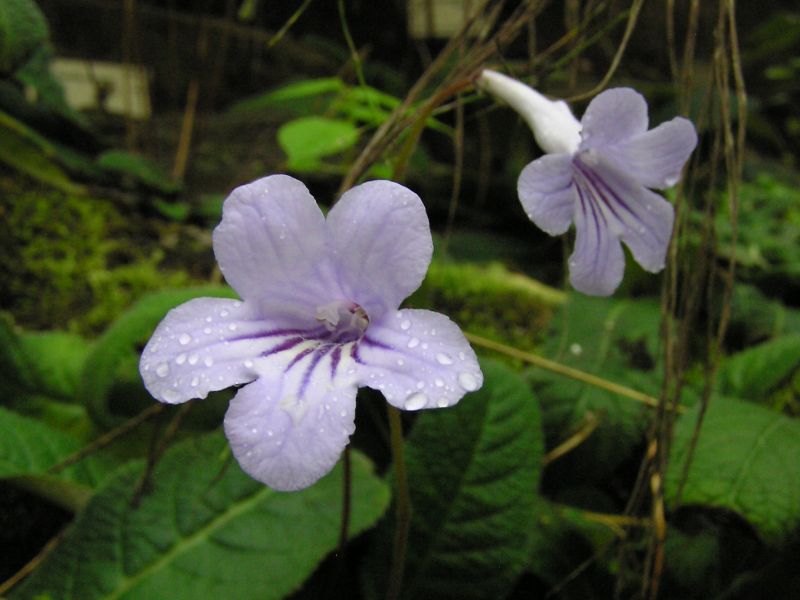
Streptocarpus Rex (royal) - the ancestor of subsequent hybrid forms. Its flowers look like drooping tubes with a bend of 5 petals.
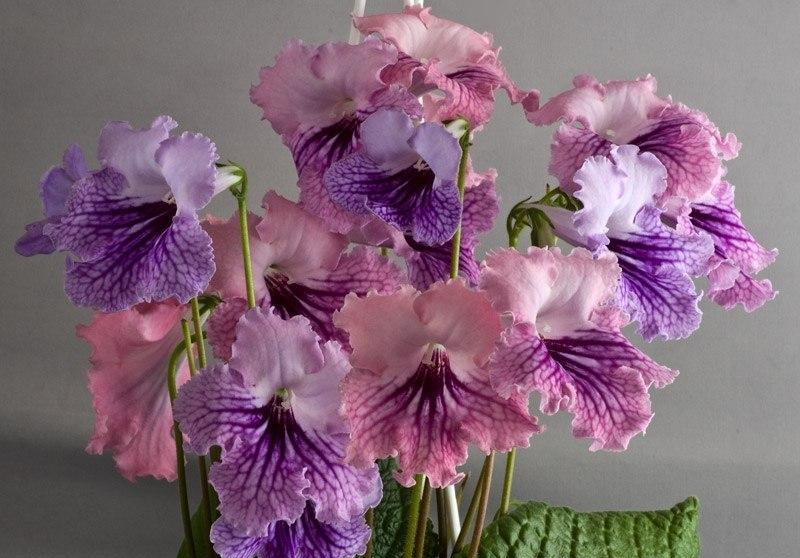
Streptocarpus Kirk is a creeping representative of the genus, stem type. It abundantly shrubs, does not exceed 15 cm in height and acquires light purple flowers.
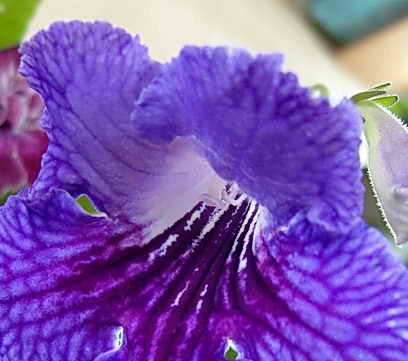
Streptocarpus primrose is a rosette species. On the stem up to 25 cm, only up to 4 flowers can bloom. Petals have all kinds of stains, strokes and spots.
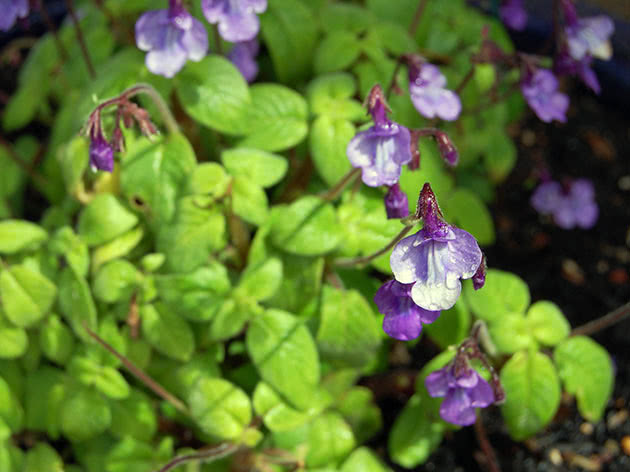
The hanging stalks of the streptocarpous rock grow up to 50 cm. The bluish-colored flowers that bend down are similar to the flowers of Saintpaulia.
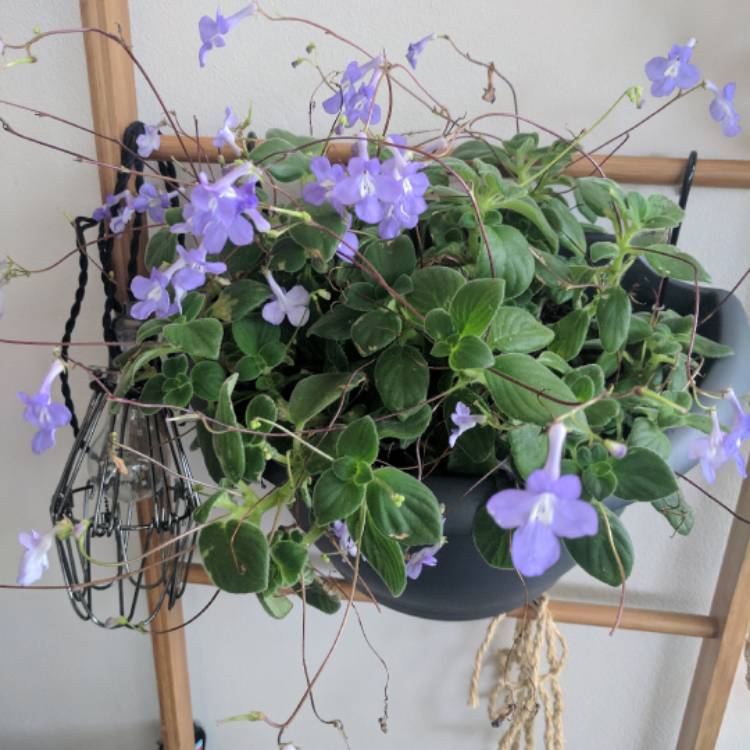
Streptocarpus is stem-forming, like Kirk, creeping, but reaches a height of 50-60 cm. The flowers are small, light blue.
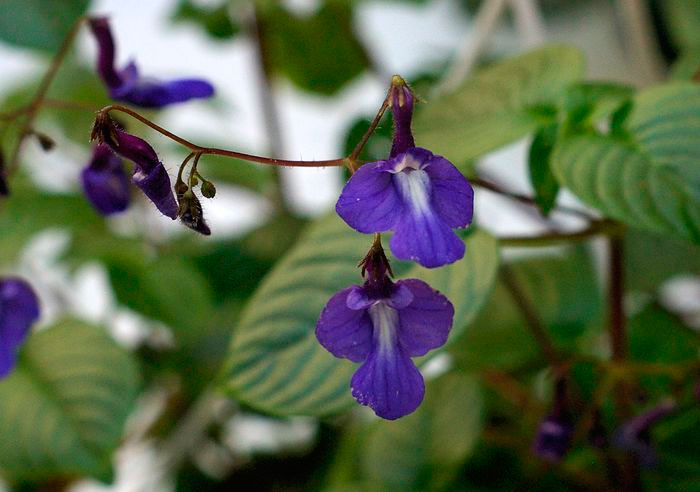
The streaks of the Canvas streptocarpus are flexible and fleshy, reaching 50 cm. The leaf plates are wrinkled and pubescent, and small (about 3 cm) flowers have a purple color with a white corolla tube.
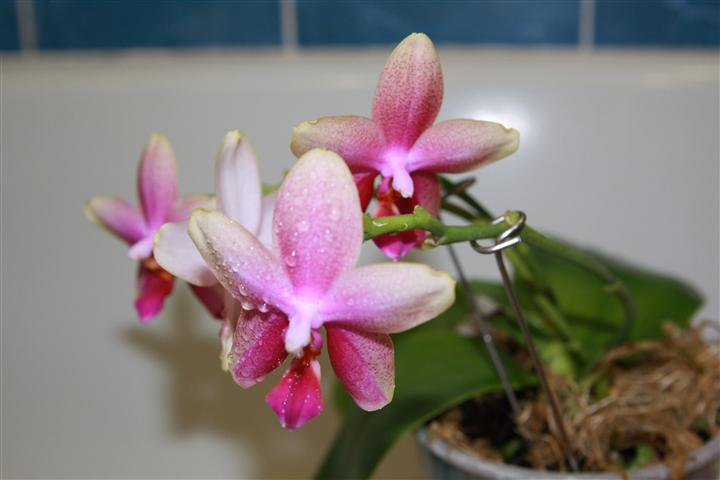 You may be interested in:
You may be interested in:Features of caring for streptocarpus at home
It is quite realistic to create comfortable conditions for this representative of the flora at home. It is only necessary to take into account agricultural requirements.
Lighting
Streptocarpuses prefer an abundance of ambient light. In summer, they are comfortable at the windows not only in the western and eastern directions, but also in the north, and in winter - in the south.
Temperature and humidity
Despite the fact that the plant comes from the tropics and subtropics, it does not tolerate heat well. Close proximity to heating appliances is undesirable, and an air temperature above 30 ° C weakens the protective properties and provokes the appearance of diseases. Comfortable temperature 15-25 ° C (optimally 24 ° C). With its increase, air humidity should increase. In winter it is recommended to provide coolness (usual grades are enough 15-18 ° C, hybrid 18-20 ° C). Daily temperature fluctuations from 5 to 25 ° C streptocarpus tolerate easily. Drafts and a little cool will not hurt.
Streptocarpuses like moist air at the level of 55-75%. It is recommended to spray not the plant itself, but the space nearby. Flower pots can be placed in a tray with moistened expanded clay, moss or river pebbles. Additional humidity will create evaporation of water from adjacent tanks.
Watering and feeding
Watering should be regular, but moderate. Water is needed soft, settled and, preferably, 2-3 degrees warmer than the temperature in the room. Overmoistening leads to rotting of the root system. Excessive drying is also harmful. However, short-term drying of the soil will help in the prevention of rot.
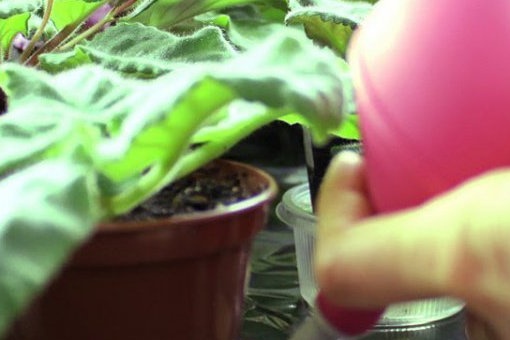
Streptocarpus needs regular feeding. An exception is made for the winter dormant period (if the plant is kept in cool conditions and in low light), when feeding is not needed.
Comprehensive fertilizers for flowering plants are recommended. They should be applied when watering. Well-soluble water-soluble drugs Master, Kemira-lux and liquid Etisso. Too much food can hurt, so the dose indicated in the instructions should be halved. The interval between top dressing is 10-12 days.
Reproduction and transplantation of streptocarpus at home
Reproduction of streptocarpuses is possible by seed, division of the mother bush and cuttings
Seed cultivation
The best time for sowing is the beginning of spring. In winter, seedlings need additional artificial light.
You will need small containers with holes at the bottom. They need to place drainage and a substrate of sand and peat (or peat, vermiculite and perlite). Small seeds should be evenly distributed over the surface. Then, without sprinkling, spray with a pink solution of potassium permanganate, cover with a transparent material with holes and put in a warm (20-23 ° C) and well-lit place. The mini-greenhouse must be periodically ventilated and, if necessary, moisten the substrate with a spray gun.
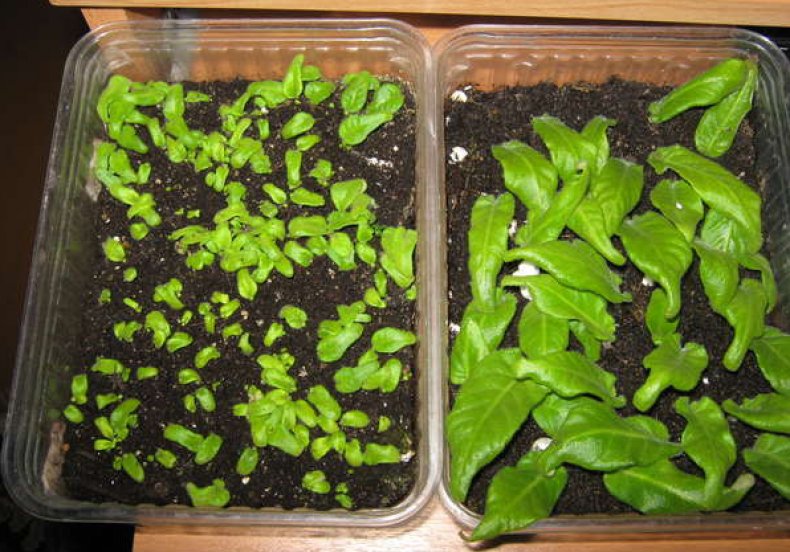
Seedlings can be expected in 2 weeks. It is advisable to refuse shelter only 10 days after their appearance. But first, you need to temporarily open and close the lid or film, so that the young growth gets used to the indoor climate.
Strong seedlings with beautiful leaves can be planted in separate low pots with a diameter of up to 7 cm with drainage and soil purchased in the store for flowering indoor plants or self-prepared soil mix (breathable leafy earth, peat, perlite, moss and vermiculite).
Flowering obtained from plant seeds can be observed after 10-12 months.
Dividing the bush
To increase the number of flower specimens in this way is quite easy. The overgrown bush should be watered, removed from the pot, remove the existing peduncles and split using a sharp tool or by hand.Each part should have several leaves and a thickened rhizome. Slices need to be dried and processed with crushed charcoal.
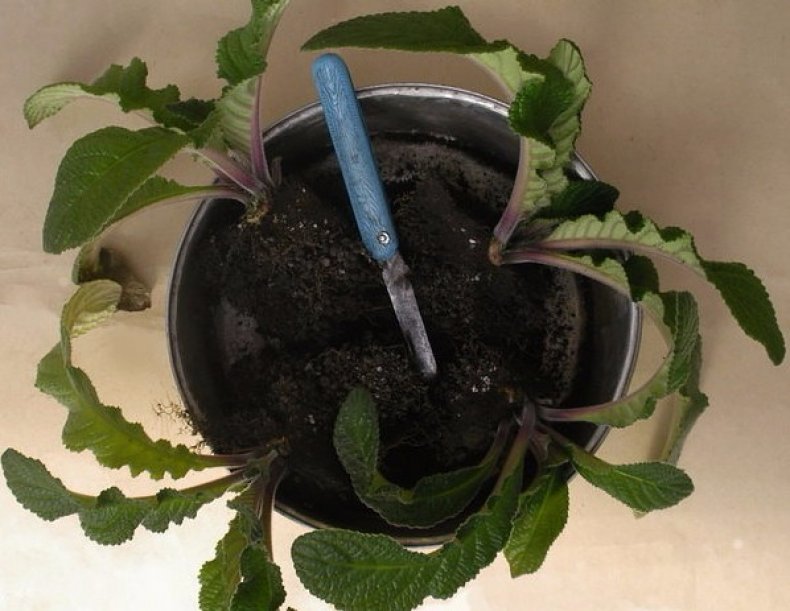
After half an hour, the delenki can be seated (up to the root neck) in separate pots with a diameter of 7 cm with a light, porous and slightly moist substrate and drainage. They should stay in a well-lit greenhouse for a month and a half. Flowering usually occurs after 2-3 months.
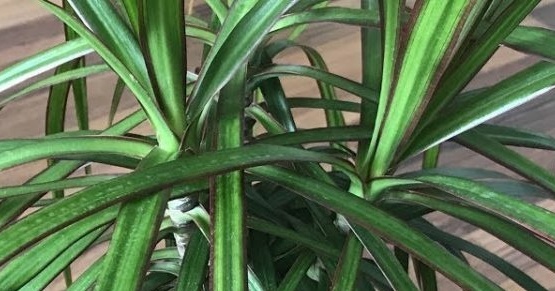 You may be interested in:
You may be interested in:Cuttings
The leaf plate needs to be cut off from the bush and cut the petiole. After this section has dried, the leaf petiole should be planted in loose soil in an upright position and covered with transparent material. You will need a bright and warm place for the growth of the plant. The mini-greenhouse should be periodically ventilated and get rid of condensation. When the instance gets stronger, it must be “relocated” into a permanent pot.
Reproduction by part of a leaf plate is allowed. The leaf must be divided with a blade into strips 50 mm wide perpendicular to the central vein. Its upper and lower parts are not needed, the rest must be planted at an angle of 45 degrees in the grooves of the soil with the base of the handle down with a distance between each of at least 30 mm. The container with cuttings should be covered with something transparent and placed in a humid place with a temperature of 20-25 ° C and long daylight hours. Next, you need watering through a pan and daily ventilation. Shoots will appear in 6-8 weeks.
Transfer
It is recommended to transplant in late winter or early spring. Young bushes need it every year, and adults every 3-4 years. A shallow pot with a drainage layer must be filled with loose soil mixture and the streptocarpus transferred into it along with an earthen lump. Next, fill the voids with a substrate and slightly compact.
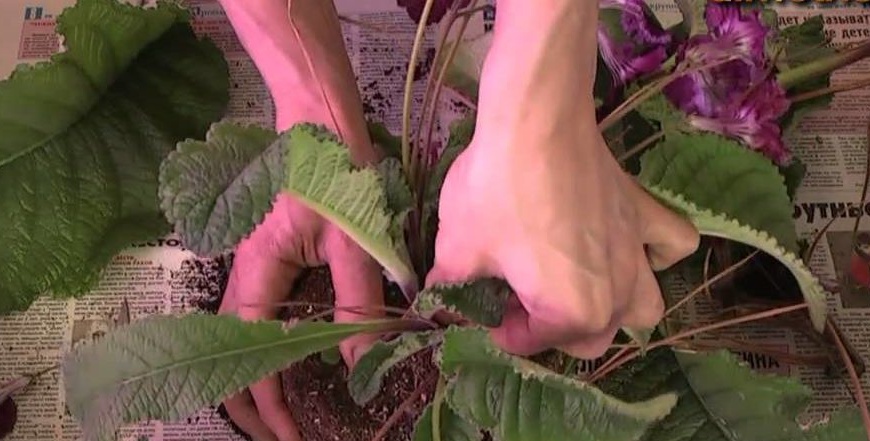
Diseases and pests of streptocarpus
The main cause of streptocarpus diseases is waterlogging. It provokes the appearance of gray rot, rot of the roots, and if the bush is thickened, then powdery mildew.
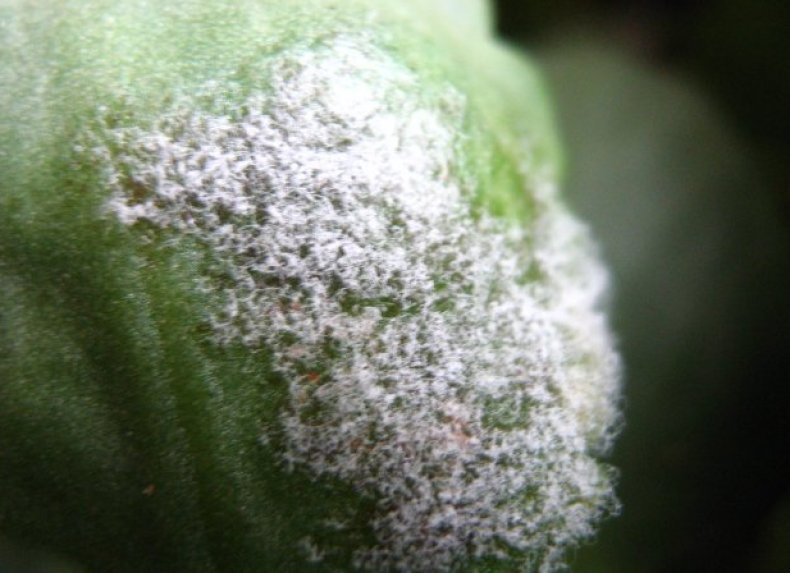
Powdery mildew actively develops at low temperature (less than 15 ° C), poor air circulation and high humidity (60-80%). A snowy powdery coating appears on the leaves. The affected areas must be disposed of immediately. The topsoil should also be replaced and all treated with antifungal agents.
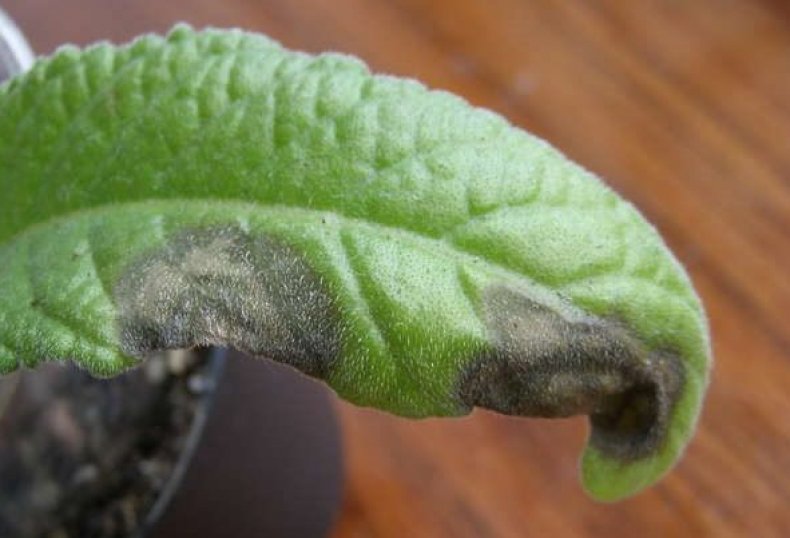
Gray rot appears on the plant as brown spots with a grayish fluffy mycelium. A high concentration of nitrogen in plant tissues can contribute to the development of this rot. It is necessary to remove damaged parts, normalize the conditions of detention and treat all with fungicidal preparations.
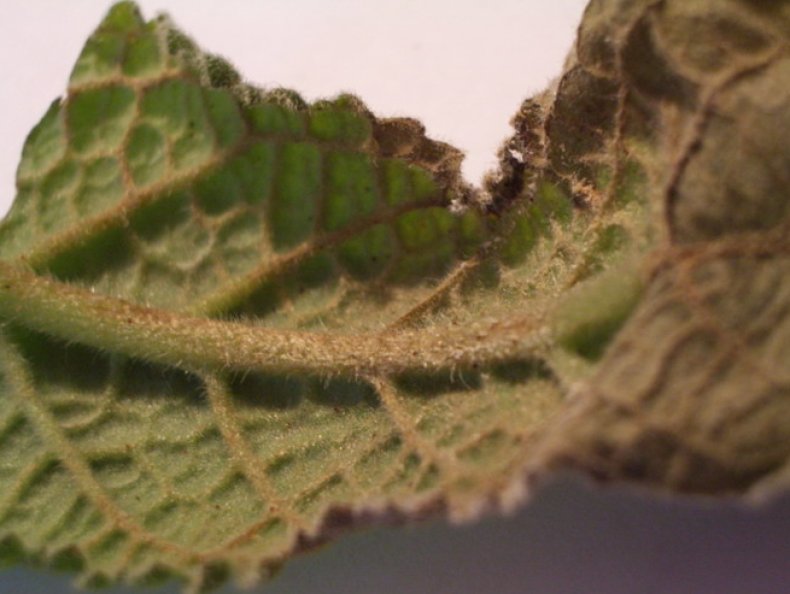
If the leaves lose turgor and brown spots appear on them, and the petioles darken, then this is due to excess moisture and poor substrate, root rot has arisen. It is necessary to provide optimal conditions for care and treat the plant 1-2 times with an interval of 10 days with biological products.
Although illnesses give owners of these flowers more trouble than pests, thrips and scale insects are also troublesome. To combat thrips, you need:
- during flowering, remove all buds and flowers;
- treat the aerial part of the plant and the soil surface with an insecticide 3 times at an interval of 1 time per week.
To eliminate the scale shield, you must:
- with a soft toothbrush or the like with a soapy solution, clean the leaves;
- treat everything with a solution of Actara (after 10 days, the procedure can be repeated).
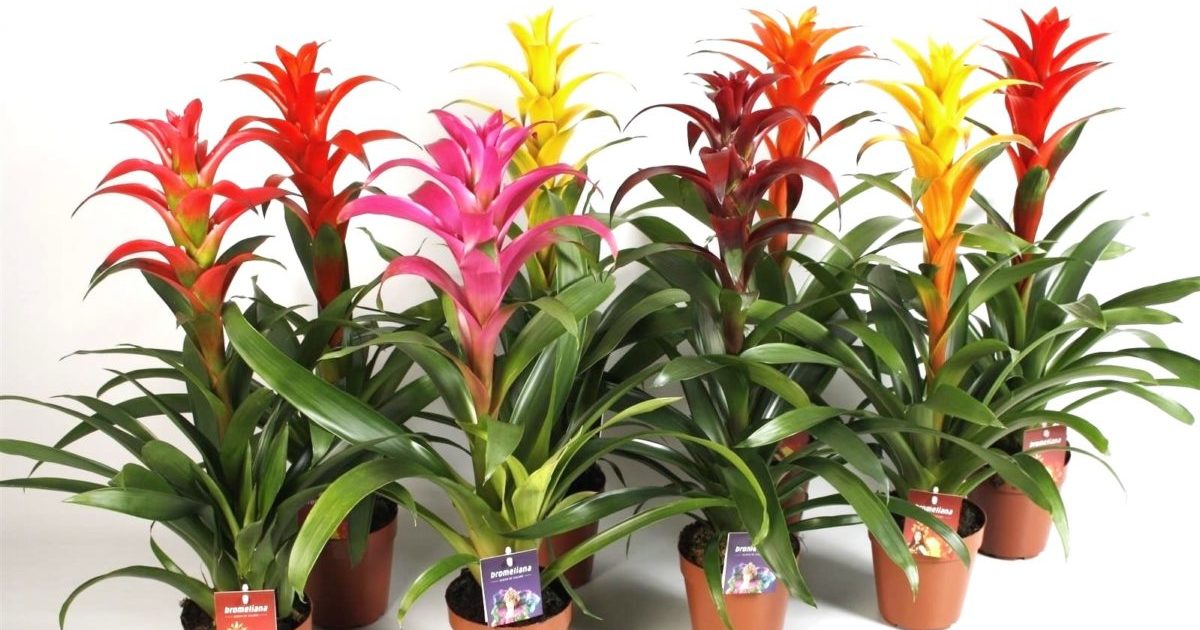 You may be interested in:
You may be interested in:Common Growing Questions
Caring for steptocarpuses is not very difficult, but care must be taken, first of all, observing moderation when watering. If the plant is provided with good diffused light, top dressing during the growing season, optimal temperature and humidity, then it will delight its flowering for a very long time. At the same time, the number of copies can be easily propagated at home by any of the methods you like.

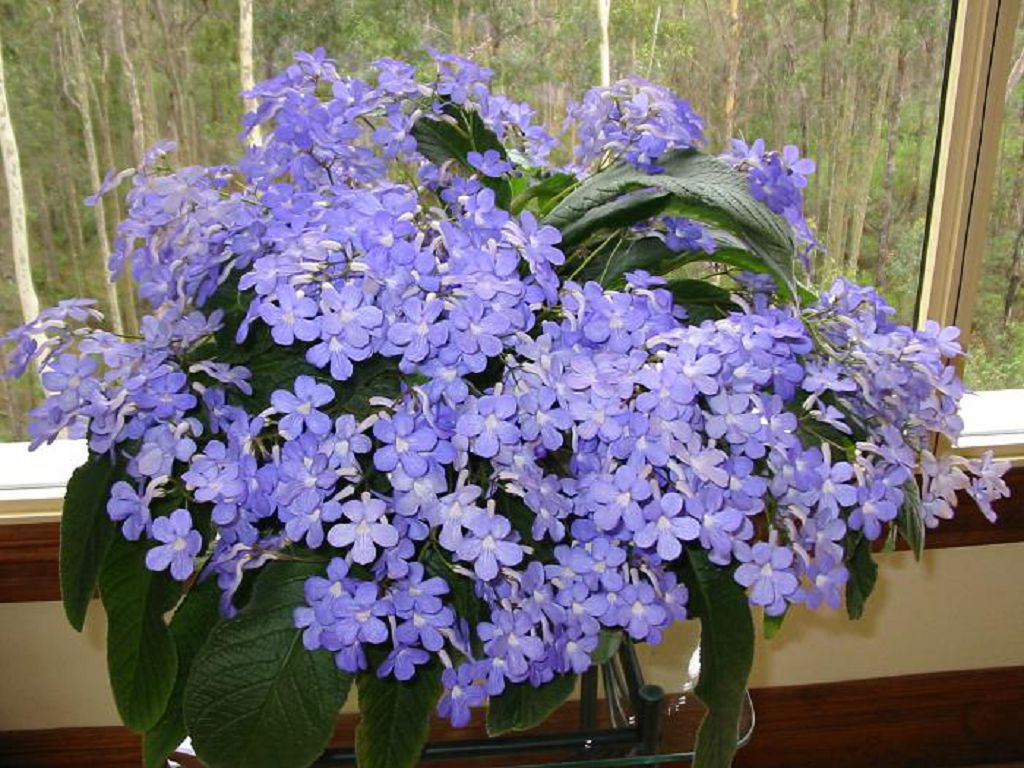
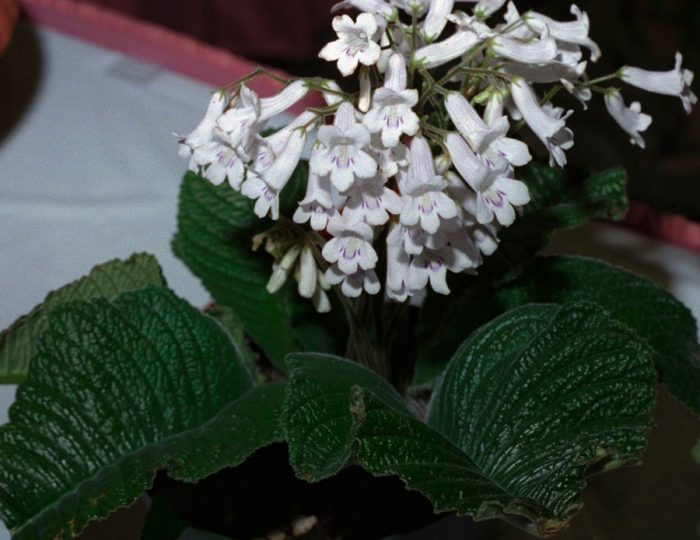
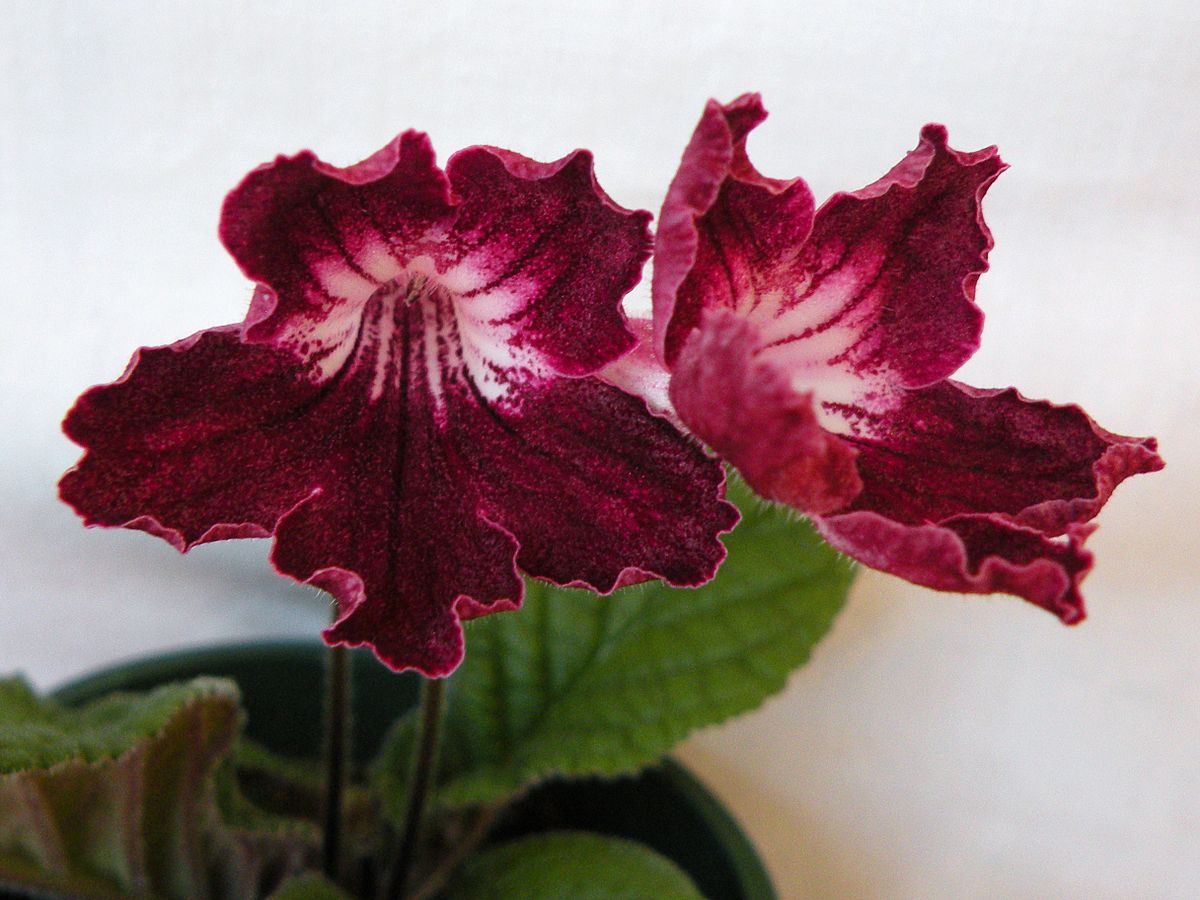
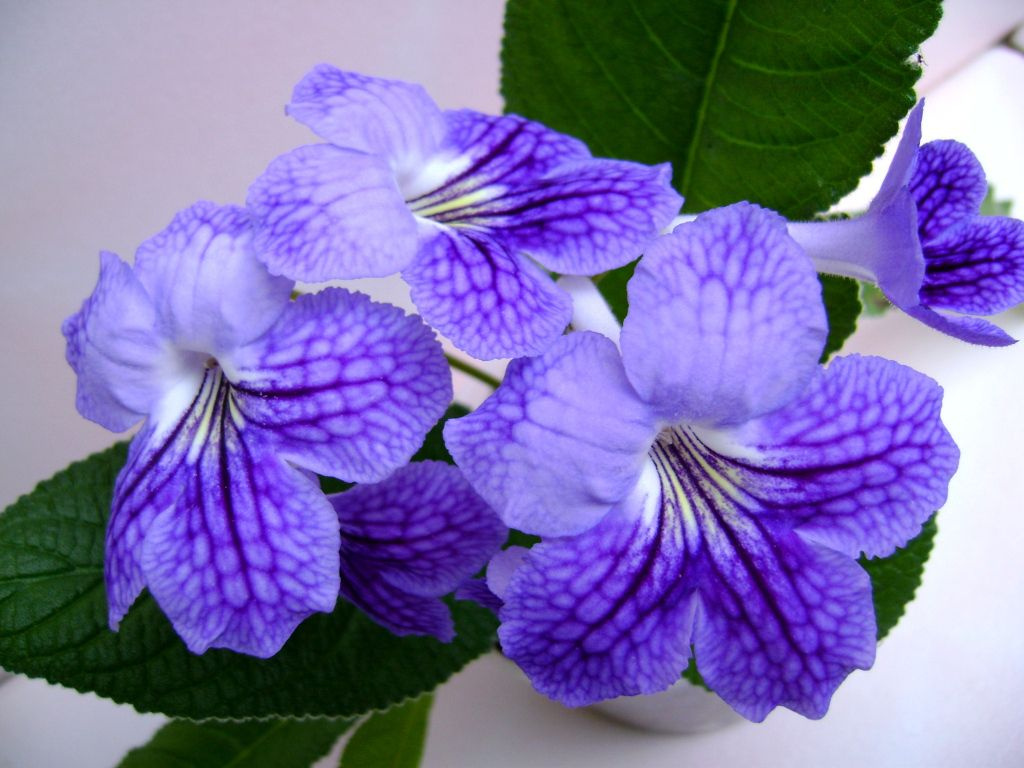
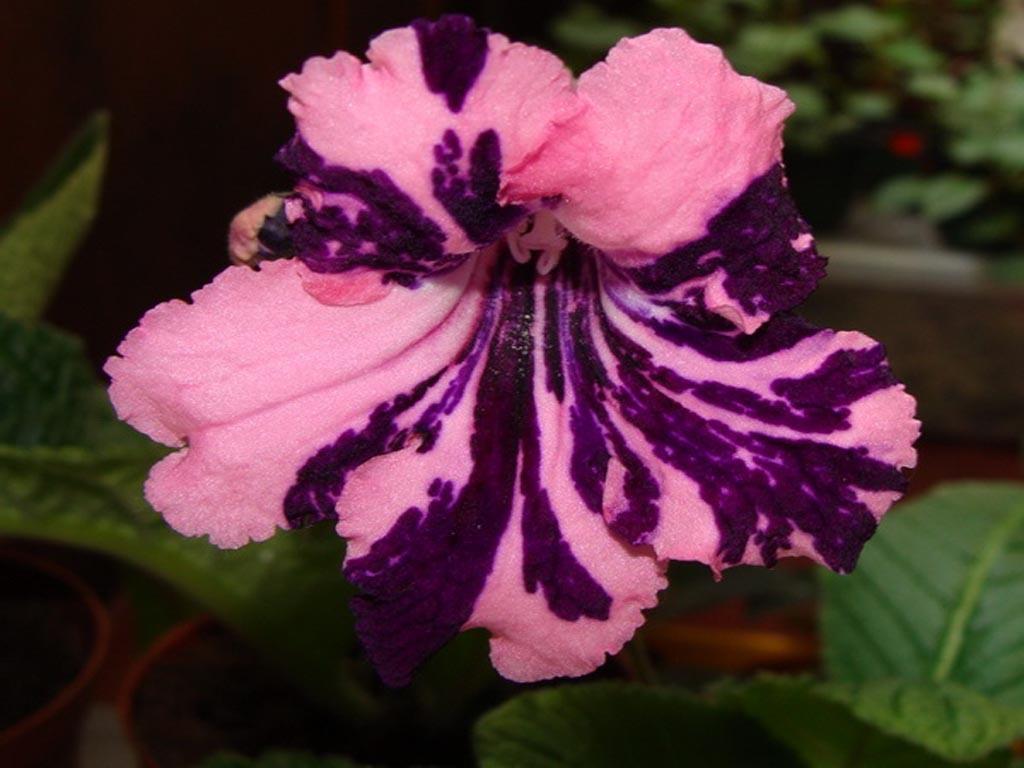
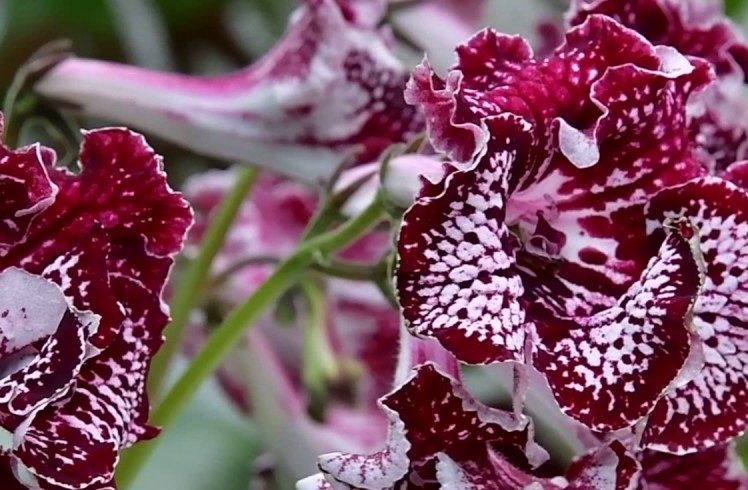



 10 beautiful annuals that bloom all summer
10 beautiful annuals that bloom all summer Sow in the ground, without seedlings: 10 beautiful and unpretentious flowers
Sow in the ground, without seedlings: 10 beautiful and unpretentious flowers Platicodon planting and outdoor care
Platicodon planting and outdoor care Hosta - planting and care in the open ground in the Urals
Hosta - planting and care in the open ground in the Urals